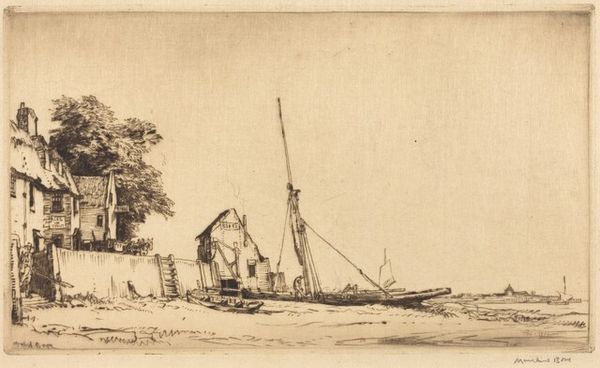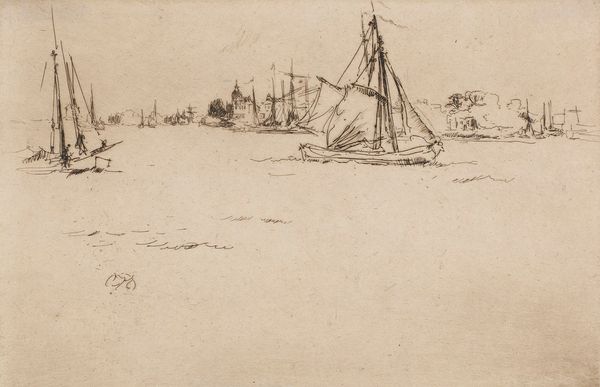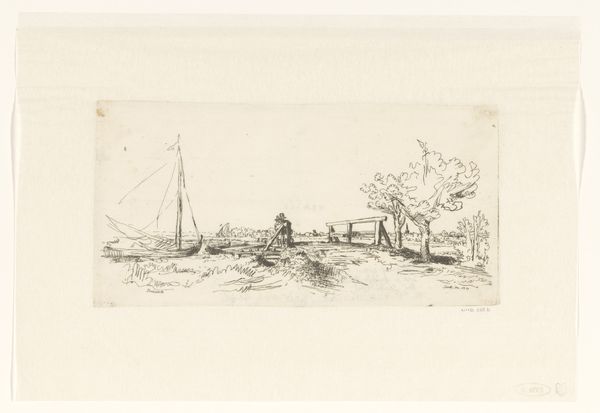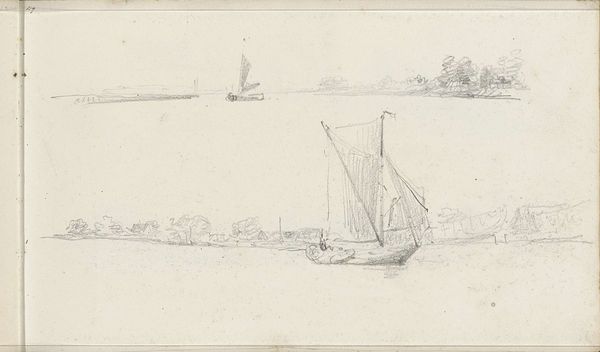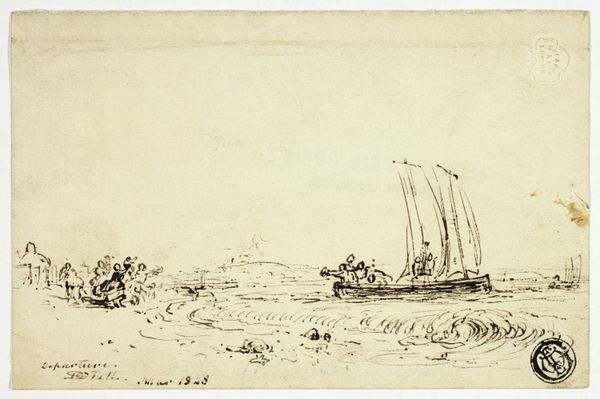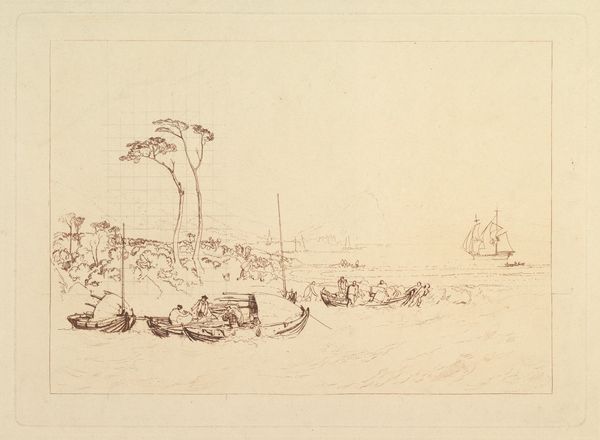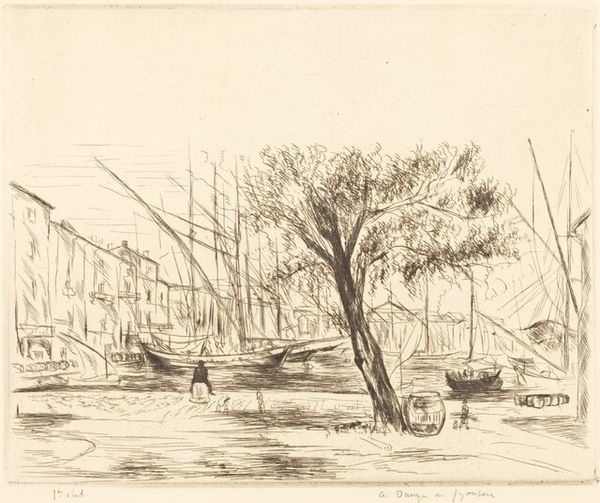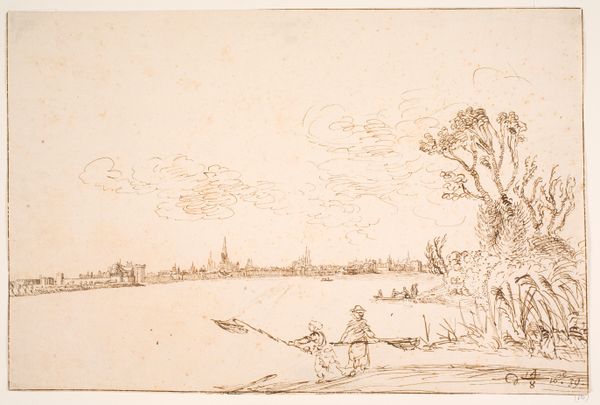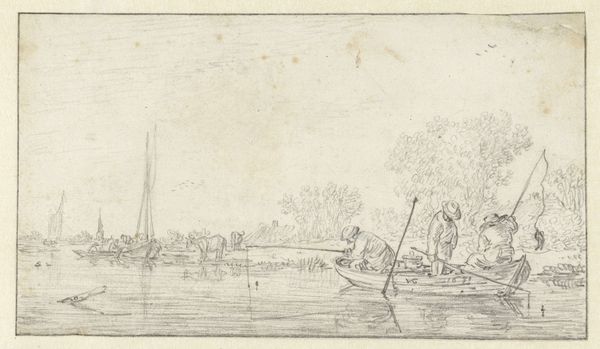
drawing, ink
#
drawing
#
impressionism
#
pen sketch
#
landscape
#
etching
#
ink
Copyright: Public Domain: Artvee
Editor: This is James Ensor's "Six's Bridge," created between 1885 and 1886, rendered in ink. It feels almost unfinished, a fleeting impression captured with very economical strokes. What strikes you most about it? Curator: Note how Ensor meticulously builds form through line alone. The density and layering near the tree and under the bridge give those areas a visual weight in opposition to the lighter strokes defining the distant boat. This carefully controlled tonal variation creates a satisfying visual harmony, don’t you agree? Editor: I do, but I almost wish he had added more detail. I find myself wanting a clearer sense of depth. Curator: But isn’t that the appeal? Ensor doesn’t give us everything; instead, the piece engages the viewer to co-create the landscape. The sketch is complete precisely because it is unfinished; additional marks would resolve tensions deliberately left unresolved. Consider the empty space—the negative space is crucial to the overall composition and contributes just as much to the articulation of the scene as any of the ink work. Editor: That's a great point. I hadn't considered the importance of what’s *not* there in creating balance. Curator: The spatial relations that Ensor builds between objects contributes a great deal to our experience, don't you think? How do the horizontal pilings across the bridge relate to the mast and rigging of the sailboats further out in the scene? Editor: Now I see it. The work feels much more dynamic by creating contrast between these horizontal and vertical forms that carry our vision. Curator: Indeed, through Ensor's carefully placed markings, a complex spatial geometry opens itself up to us, inviting our contemplation and close inspection. Editor: I see how limiting our focus strictly to the formal components of line and spatial play brings out subtleties I would've otherwise missed. Curator: Precisely. Close formal analysis opens channels to understanding.
Comments
No comments
Be the first to comment and join the conversation on the ultimate creative platform.
